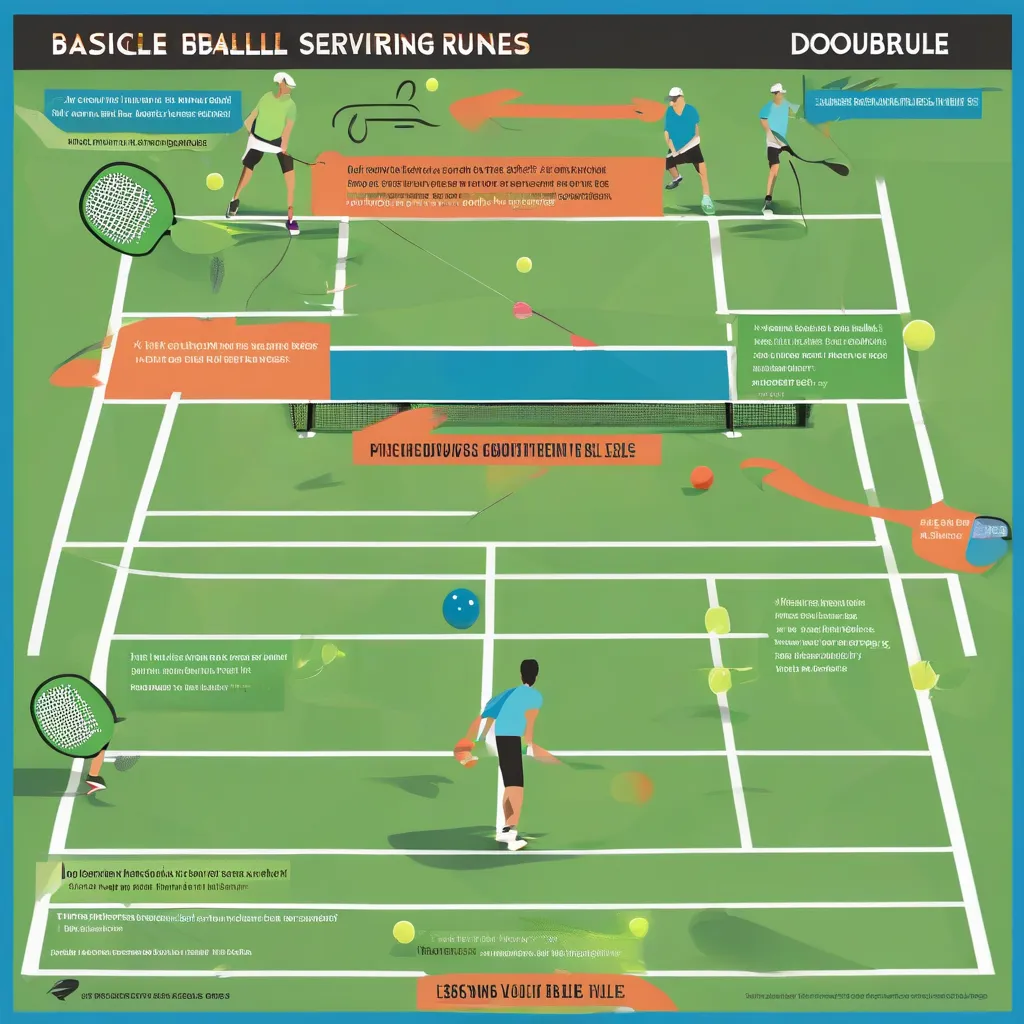Table of Contents
Introduction to Pickleball Rules: Essential Guidelines for Beginners
Pickleball is a rapidly growing sport that combines elements of tennis, badminton, and ping-pong. Understanding the Pickleball Rules: Essential Guidelines for Beginners is crucial for anyone new to the game. Whether you’re playing for fun or aiming to compete, getting the basics down will ensure you have a great time on the court.
Basic Pickleball Rules: Essential Guidelines for Beginners
Before stepping onto the court, familiarize yourself with these fundamental rules:
- The Serve: The serve must be made underhand, with the paddle contacting the ball below the server’s waist. The serve must be diagonally crosscourt and land within the confines of the opposite diagonal court.
- Double Bounce Rule: Each side must let the ball bounce once before volleys are allowed. This means the receiving team must let the serve bounce, and the serving team must let the return of serve bounce before playing it.
- Non-Volley Zone: The area within 7 feet of the net on both sides is the non-volley zone. Players cannot volley the ball if standing within this zone.
- Scoring: Points are only scored by the serving team. Games are typically played to 11 points, and a team must win by 2 points.
 Basic Pickleball Rules
Basic Pickleball Rules
Common Mistakes to Avoid in Pickleball: Essential Guidelines for Beginners
As a beginner, it’s easy to make mistakes that can hinder your progress. Here are some common errors to watch out for:
- Faulty Serve: Ensure your serve is underhand and below waist level to avoid faults.
- Ignoring the Double Bounce Rule: Remember to let the ball bounce once on each side before volleying.
- Playing in the Non-Volley Zone: Avoid volleying in the non-volley zone to prevent faults.
- Improper Scoring: Keep track of the score correctly, noting that only the serving team can score points.
Advanced Pickleball Rules and Strategies: Essential Guidelines for Beginners
Once you’ve mastered the basic Pickleball Rules: Essential Guidelines for Beginners, you can start incorporating more advanced strategies and rules into your game to improve your performance:
- Stacking: This is a strategy used in doubles where partners switch positions to maximize their strengths.
- Third Shot Drop: A strategic shot aimed at landing in the opponent’s non-volley zone, making it difficult for them to attack.
- Poaching: In doubles, one partner may cross over into the other’s side to intercept a shot, surprising the opponents.
Understanding and utilizing these advanced techniques can give you an edge over your opponents and elevate your game.
Pickleball Etiquette: Essential Guidelines for Beginners
In addition to the official Pickleball Rules: Essential Guidelines for Beginners, there are also unwritten rules of etiquette that players should follow to ensure a positive and respectful playing environment:
- Respecting Opponents: Always show good sportsmanship, whether you win or lose.
- Calling Shots Fairly: Make honest calls regarding whether a ball is in or out.
- Returning Balls: When returning balls to the server, do so in a courteous manner.
- Communicating with Your Partner: Clear and respectful communication is key to successful doubles play.
Pickleball Court Layout and Dimensions: Essential Guidelines for Beginners
Understanding the layout and dimensions of a Pickleball court is fundamental for both practice and gameplay. Here’s a breakdown of the key elements:
- Net Height: The net is 36 inches high at the sidelines and 34 inches high in the middle.
- Court Dimensions: The court is 20 feet wide and 44 feet long, with a non-volley zone extending 7 feet from each side of the net.
- Service Areas: Each side of the court is divided into left and right service areas, where serves must land to be valid.
Having a clear understanding of these dimensions will help you position yourself correctly and adhere to the rules during play.
Resources for Further Learning
To continue improving your Pickleball skills, check out these valuable resources: